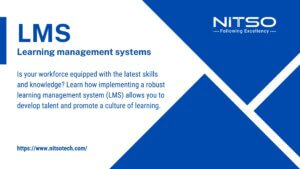Outplacement is the process of supporting employees who are leaving an organization and transitioning into new roles. With companies needing to restructure and downsize at times, outplacement talent management has become a critical responsibility for HR.
When outplacement is handled thoughtfully, it can create a win-win for both employers and departing staff. This article will explore how HR can effectively manage talent during the outplacement process. The key is taking a strategic approach to maintaining engagement, preserving knowledge, and upholding your employer brand while employees exit your organization.
By investing in the talent transition, you reduce legal risks, support individuals in finding promising opportunities, and keep relations positive with former staff who may provide value down the road as alumni. Effective outplacement talent management requires planning, communication, training and metrics tracking. Done right, it allows HR to do right by people, even when having to let them go.
Table of Contents
Why Outplacement Talent Management Matters
There are several compelling reasons why organizations should focus on strategic outplacement talent management.
- Maintains engagement and productivity – Employees who are transitioning out of a company often experience decreased engagement and productivity. Their performance may decline. With proactive outplacement support, HR can provide clarity around expectations during the transition period and incentive programs to motivate staff to remain productive.
- Reduces legal risks – Poorly managed outplacement can prompt lawsuits around discrimination or breach of employment contracts. Effective outplacement shows good faith effort to support departing staff, which reduces legal exposure.
- Protects employer brand – Outplacement done right demonstrates an organization cares about talent, even when needing to cut staff. This preserves a positive employer reputation. Outplacement reflects company values in action.
- Allows redeployment of talent – Outplacement may be required due to eliminated roles. However, some transitioning employees may fit other open positions. Outplacement talent management gives HR a chance to evaluate capabilities and assess if valued talent can be redeployed.
- Provides career transition support – Ethical companies must help departing staff succeed in the next phase of their careers. Outplacement talent management does this through career coaching, training, resume help, and interview prep.
- Keeps alumni connections – Departing employees may come back as future hires, vendors, or partners. Maintaining connections through alumni networks preserves these possibilities.
In summary, organizations that invest in thoughtful outplacement talent management realize a range of HR and business benefits. It shows employees they are valued and advances the company’s reputation and talent strategy.
Plot Your Outplacement Strategy in Advance
Effective outplacement talent management requires planning and preparation by HR. Some key steps include:
- Identify roles at risk – HR should analyze upcoming initiatives that may require downsizing or restructuring. This allows for scenario planning around impacted roles and business areas. HR can model different options to minimize disruption.
- Assess essential skills – HR should work with business leaders to identify skills and capabilities that are essential to retain, even with reduced headcount. This understanding can inform outplacement and redeployment decisions.
- Map talent gaps – By comparing current talent to the capabilities needed for the organization’s future state, HR can pinpoint talent gaps created by transitions and start recruiting efforts to fill them proactively.
- Develop communication plans – HR needs customized communication plans for different employee segments – those staying, those being outplaced, and those taking on new roles. Transparent communication reduces uncertainty.
- Select outplacement providers – Research and select outplacement firms on factors like services offered, experience in your industry, customer satisfaction, and costs. The best outplacement providers act as strategic partners.
- Train managers – Managers need training in conducting transition meetings, maintaining team morale, preserving knowledge, and championing departing employees.
Equip Managers to Champion Transitioning Talent
Managers play a crucial role in effective outplacement talent management. They are on the front lines with employees who are transitioning out. It is vital that HR properly trains managers on how to handle outplacement effectively. Key training topics should include:
- Conducting transition meetings – Managers need training in having sensitive, clear conversations with employees about their outplacement. They need to walk through timelines, separation packages, and next steps compassionately while delivering clear messages. Role-playing can help build this skill.
- Providing references – Managers should be trained on appropriate procedures for giving professional references for transitioning staff. This supports their career advancement.
- Maintaining team morale – When some employees are leaving a team, managers need skills to keep the remaining team members motivated, focused and productive. Training can cover communication strategies and morale-building tactics.
- Facilitating knowledge transfer – Managers should allow time and resources for departing team members to document their knowledge and train others to minimize the loss of skills, experiences and insights. Managers play a key role in knowledge retention.
- Championing former employees – Managers serve as crucial allies that help departing employees feel supported, not cast out. Training helps managers act as talent champions rather than just cutting people loose.
With proper training, managers become advocates for transitioning talent rather than just enforcers of outplacement. They play multifaceted roles – as coaches, supporters, communicators, employee retention and change leaders.
Transition Support
HR serves a vital function in providing transition support to employees going through outplacement. Some impactful ways HR can support employees include:
- Career counselling – HR should meet individually with transitioning employees to discuss their career goals, skills, interests and job search needs. Guiding people through self-reflection clarifies the next steps.
- Resume & profile review – HR can provide crucial feedback to make resumes and online profiles stronger. Most people need objective help tailoring materials for today’s job market.
- Job search strategies – HR can educate on tapping networks, researching companies, using job sites, and getting referrals to unlock smarter job searches. Many need to update old approaches.
- References – HR can provide references showcasing strengths and accomplishments. They know the person’s work more intimately than immediate managers.
- Alumni connections – HR keeps former employees apprised of company news, job openings, networking events and training opportunities through alumni networks.
Keep Alumni in the Loop and Family
Even after employees transition out, HR plays an ongoing role through outplacement to stay connected and nurture alumni relationships. Staying connected can provide future value to both former employees and the organization. Examples include:
- Alumni networks – HR can create and manage alumni groups on LinkedIn, Facebook, Slack or special platforms to enable networking, updates and relationship-building among former colleagues.
- Newsletters – HR distributes periodic newsletters to update alumni on company news, people changes, new initiatives, industry trends and useful articles. Keep them in the loop.
- Event invitations – Invite alumni to participate in company events like holiday parties, picnics, guest speaker talks and community service projects. Make them feel still part of the family.
- Training opportunities – HR informs alumni of relevant training workshops, webinars, certificate programs and conferences the company is offering that alumni can join. Aid their development.
- Job openings – HR reaches out to alumni when jobs open up that fit their skills and interests. Welcome back former talent as “boomerang employees.”
Proactive alumni relations demonstrate that people matter before, during and after outplacement. Staying connected reaps dividends.
Let Data Guide Your Outplacement Improvements
To optimize future outplacement talent management, HR needs to measure key metrics and results. Useful data to track includes:
- Time-to-rehire – How long on average does it take transitioned employees to secure new jobs? Speedy rehires indicate effective career support.
- Alumni rehire rates – How many alumni return to the company as employees or contractors? High rates show valuable ongoing relationships.
- Manager feedback – Collect input from managers on how well they were prepared and supported during outplacement. Identify any manager training gaps.
- Employee satisfaction – The survey transitioned employees on their outplacement experience and career support. High scores equal good execution.
- Legal claims – Monitor if any outplaced employees pursue legal claims related to their transition. Lawsuits may signal problems.
By tying outplacement activities to clear metrics, HR can pinpoint what works well and what needs fine-tuning. Analytics produce sharper strategies and continually elevate the employee experience.
The Outplacement Golden Rules
Effective outplacement talent management is strategic, and compassionate and minimizes disruption. Key takeaways include:
- Invest in thorough preparation and planning
- Train managers extensively as outplacement partners
- Provide robust career transition support
- Maintain ongoing alumni relationships
- Track metrics tied to outplacement success
By mastering outplacement, HR honours those who are leaving while protecting knowledge, morale, and employer brand. Outplacement done right is human-centred.
Article you might be intrested in: A Strategic Approach to Rolling Out New Benefits Technology
Final Thoughts
In today’s dynamic business environment, organizations must get outplacement talent management right. When executed strategically, outplacement allows companies and employees to navigate change successfully while advancing their mutual interests. Both parties win.








0 Comments